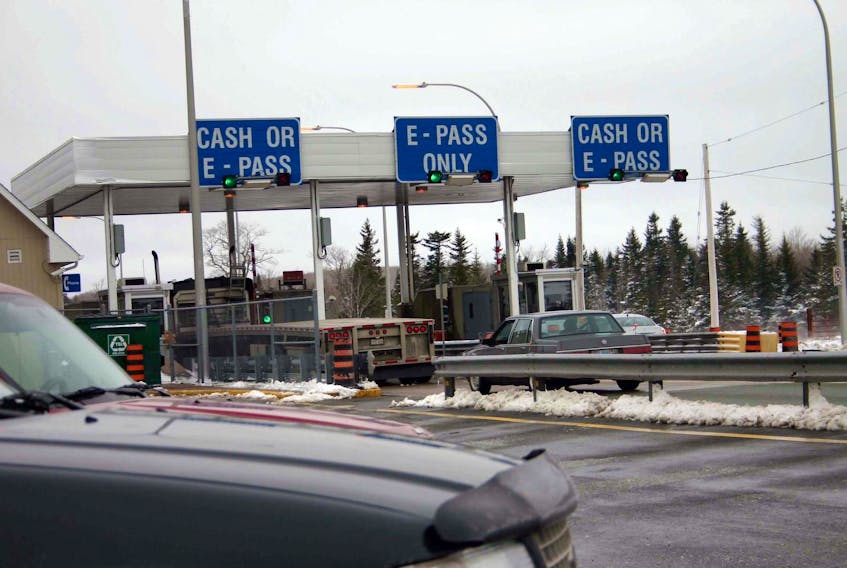Do you want it faster or cheaper?
The answer to that question seems to determine how the Nova Scotia government builds new roads.
At least it did when the province decided to go with a P3 — public-private partnership — model to build about 38 kilometres of new Highway 104 from Sutherlands River in Pictou County to Antigonish.
By contracting with a private sector partner to design, build, finance, operate and maintain the new highway, the province expects it to be completed by the end of 2023. How much the road will cost Nova Scotian taxpayers won’t be known until the province picks a partner and, one would hope, discloses details of the deal.
Officials with the Department of Transportation and Infrastructure Renewal told the legislature’s Public Accounts Committee this week that had the construction proceeded the usual way — where there’s still a private contractor, but just for the build — it would likely take a decade or more for the highway to be completed.
Beyond that, they didn’t have much to say, as virtually every other detail about the new road is subject to whatever the eventual private sector partner proposes.
The only previous experience the province has with a P3 highway is the Cobequid Pass, a 45-kilometre toll highway from Glenholme in Colchester County to Thomson Station, Cumberland County. Twenty-three years ago that highway was built in, remarkably, in just 20 months. At the government’s normal rate of road construction, the pass may not have opened for 20 years.
The Cobequid Pass bypasses and, for non-local traffic, replaces the old highway that winds through the Wentworth Valley. When that highway was the main route through that part of the province, fatal accidents occurred with such tragic regularity that the area was labelled Death Valley.
On average, three people died in accidents there every year. Since the Cobequid Pass opened, fatalities on both roads have declined to fewer than one annually.
The new, twinned highway from Sutherland’s River to Antigonish got put on the P3 fast-track for safety reasons, as well. The existing road across eastern Pictou County to Antigonish has been the scene of multiple highway tragedies over the years.
But the new section of Highway 104 is different from the Cobequid Pass. It won’t include a toll.
It will be designed, constructed, financed, and for 20 years operated and maintained by one of three private sector consortia who are making proposals to the province.
The government expects to have selected the winning proponent by early next year, in time for construction to begin in 2020. Those three proponents are the Dexter-Nova Alliance, which brings together two of the province’s most prominent construction companies; with U.K.-based Osprey Transportation Solutions; and Atlantic Safelink Partners, a consortium that includes Fengate Asset Management and global construction giant VINCI Construction.
The provincial NDP estimates the Cobequid Pass cost Nova Scotian taxpayers about $100 million more than it would have had the highway been publicly-financed and note that that figure doesn’t include the $350 million in tolls paid by travellers on the pass.
The new section of Highway 104 carries an estimated price tag of between $232 million to $285 million, but, over time, taxpayers will pay far more than that for the twinned highway. Steeper financing costs than the province pays, and a healthy profit for the private partner will be built into the proposals, and those are the elements of P3 that the NDP, public sector unions and other critics find objectionable.
If the government could complete a highway on timelines similar to that achievable by a private consortium, surely that is the best deal for taxpayers. But it can’t seem to do that.
Back in the mid-90s, then-Transportation Minister Richie Mann said damn the torpedoes, and the critics, because the carnage in Death Valley had to stop. Back then the province was paying 10 per cent of its total revenues just in interest on its debt, so taking on more debt to build the highway wasn’t an option.
The private partnership route, complete with tolls, was the only way to get the Cobequid Pass built and built fast. And so, that’s what Premier John Savage’s government did, and paid a steep political price.
A simple calculation of the fatality rate on the old road, extended over the years it would have taken to build the pass the usual way, tells us that as many as 50 people are walking around today who would have lost their lives in Death Valley had the pass not been built as fast as it was.
Lives lost and lives destroyed aren’t figured into the bottom line when P3 highway construction is compared to the cost of the traditional method of construction.
When it is, it makes a bad deal for taxpayers look more like a better choice for the public.
RELATED:








